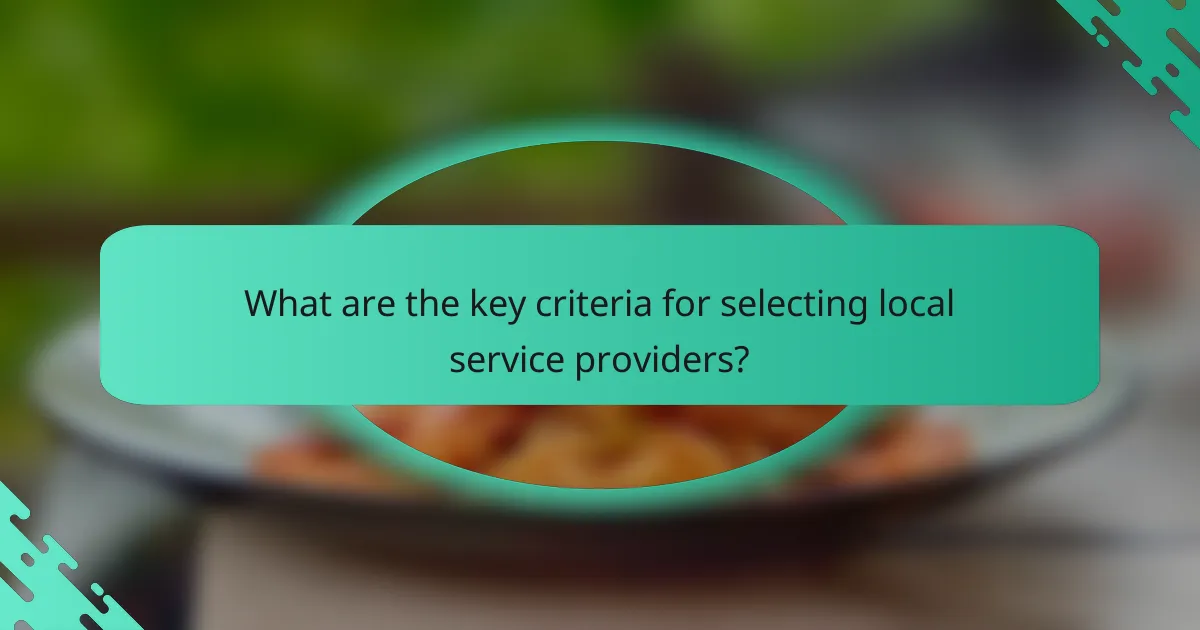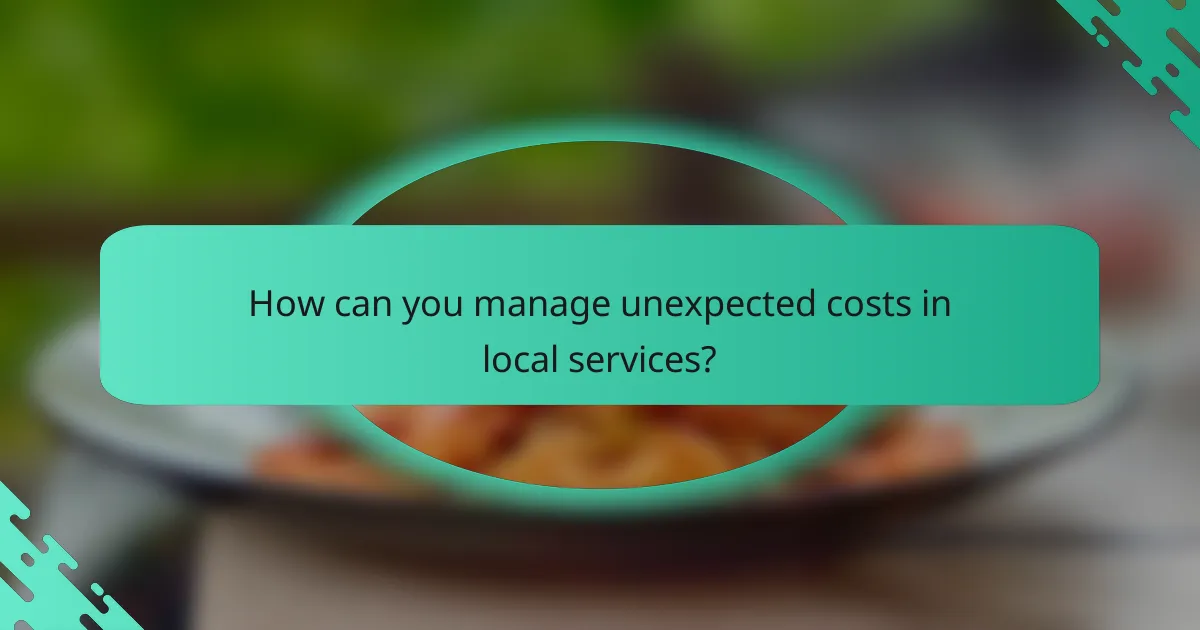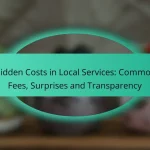Budgeting for local services in areas like Los Angeles requires a clear understanding of the typical costs associated with home repairs, landscaping, and plumbing. Variability in pricing can arise from factors such as service complexity, provider rates, and seasonal demand, making it essential for residents to anticipate these fluctuations. By familiarizing themselves with different pricing models, including flat-rate, hourly, and project-based costs, consumers can make informed decisions and budget effectively for their needs.

What are the budgeting expectations for local services in Los Angeles?
In Los Angeles, budgeting for local services involves understanding the typical costs associated with home repairs, landscaping, and plumbing. Residents should anticipate variability based on service complexity, provider rates, and seasonal demand.
Average costs for home repairs
The average costs for home repairs in Los Angeles can range significantly depending on the type of work needed. Minor repairs, such as drywall patching or painting, may cost between $100 to $500, while major renovations can easily exceed $10,000.
When budgeting for home repairs, consider obtaining multiple quotes from contractors to ensure competitive pricing. It’s also wise to set aside a contingency fund of about 10-20% of the total repair budget for unexpected expenses.
Typical expenses for landscaping services
Landscaping services in Los Angeles typically range from $50 to $150 per hour, depending on the complexity of the work and the experience of the landscaper. Basic lawn care services, such as mowing and trimming, can cost around $100 to $300 per visit.
For larger projects like garden design or installation, budgets can start at $1,000 and go up significantly based on the scope. Always clarify the services included in the quote and check for any additional fees that may arise.
Common fees for plumbing services
Plumbing services in Los Angeles generally charge between $100 to $300 for standard calls, which may include minor repairs or inspections. More extensive work, such as repiping or major installations, can range from $1,500 to $5,000 or more.
When hiring a plumber, look for licensed professionals and ask for detailed estimates that break down labor and materials. It’s advisable to budget for potential emergency repairs, which can be significantly higher than standard rates.

How do costs vary for local services?
Costs for local services can differ significantly based on various factors, including location, demand, and service type. Understanding these variations helps consumers budget effectively and make informed choices.
Factors affecting pricing in different neighborhoods
Pricing for local services often reflects the economic conditions of specific neighborhoods. Areas with higher living costs or greater demand for services typically see elevated prices compared to less affluent regions.
For example, a basic landscaping service might cost around $50 to $150 in suburban neighborhoods, while the same service could range from $100 to $300 in urban areas. Factors such as local competition and the availability of skilled labor also play a crucial role in determining prices.
Seasonal variations in service costs
Service costs can fluctuate seasonally, influenced by demand peaks and troughs. For instance, home cleaning services may charge more during spring when many people engage in deep cleaning and organizing.
Additionally, outdoor services like lawn care or snow removal can see significant price changes based on the season. Expect to pay around 10-30% more during peak seasons compared to off-peak times. Planning ahead and scheduling services during off-peak periods can lead to substantial savings.

What are the common pricing models for local services?
Local services typically use several pricing models, including flat-rate pricing, hourly rates, and project-based costs. Understanding these models helps consumers budget effectively and choose the right service provider based on their needs.
Flat-rate pricing examples
Flat-rate pricing involves a fixed fee for a specific service, regardless of the time taken to complete it. This model is common in services like plumbing or electrical work, where a standard rate is charged for common tasks, such as fixing a leak or installing a fixture.
For instance, a plumber might charge a flat rate of around $150 to $300 for a standard service call, which includes labor and materials. This pricing model provides clarity and predictability for consumers, as they know the total cost upfront.
Hourly rates for contractors
Hourly rates are another common pricing model, particularly for contractors in construction or home improvement. In this model, clients pay for the actual time spent on the job, which can vary based on the complexity of the work.
Typical hourly rates for contractors can range from $50 to $150 per hour, depending on their expertise and the region. It’s essential to clarify what the hourly rate includes, such as materials or travel time, to avoid unexpected costs.
Cost per project for cleaning services
Cleaning services often use a cost-per-project pricing model, where clients are charged a set fee for a specific cleaning task, such as deep cleaning a home or office. This approach allows clients to understand the total cost before the service begins.
For example, a standard deep cleaning of a two-bedroom apartment might cost between $100 and $250, depending on the size and condition of the space. When hiring cleaning services, ask for a detailed breakdown of what is included in the price to ensure all expectations are met.

How to estimate your local service budget?
Estimating your local service budget involves identifying all potential costs associated with the services you need. This includes direct expenses, indirect costs, and any variability that may arise based on service providers or local regulations.
Steps to calculate total service costs
Start by listing all the services you require and their associated costs. Gather quotes from multiple local providers to understand the price range for each service. Include both fixed costs, such as service fees, and variable costs, like materials or labor that may fluctuate.
Next, consider any additional expenses that may arise, such as taxes, permits, or maintenance fees. For instance, if you’re budgeting for landscaping, factor in seasonal changes that might affect costs, like winter snow removal or summer irrigation.
Finally, add a contingency amount, typically around 10-20% of your total estimated costs, to cover unexpected expenses. This buffer can help you manage any financial surprises that may occur during the service period.
Tools for budgeting local services
Utilize budgeting tools and software specifically designed for local services to streamline your calculations. Applications like Mint or YNAB (You Need A Budget) can help track expenses and visualize your budget over time.
Spreadsheets can also be effective for budgeting. Create a simple table listing each service, its estimated cost, and any additional fees. This allows for easy adjustments as you receive updated quotes or change your service needs.
Lastly, consider consulting with local financial advisors or service professionals who can provide insights into typical costs in your area. They may offer valuable tips on how to optimize your budget based on regional pricing trends.

What are the key criteria for selecting local service providers?
When selecting local service providers, key criteria include service quality, reputation, and compliance with regulations. Evaluating these factors ensures you choose a reliable provider that meets your specific needs.
Evaluating service quality and reviews
Service quality can be assessed through customer reviews and ratings, which provide insights into the experiences of previous clients. Look for patterns in feedback, such as consistent praise or recurring complaints, to gauge overall satisfaction.
Consider checking multiple platforms for reviews, including Google, Yelp, and local forums. A provider with a high average rating and a substantial number of reviews is often a safer choice.
Importance of licenses and insurance
Licenses and insurance are critical indicators of a service provider’s legitimacy and professionalism. A valid license ensures that the provider meets local regulatory standards, while insurance protects you from potential liabilities during service delivery.
Always request proof of licenses and insurance before hiring a provider. In many regions, operating without proper licensing can lead to fines or legal issues, making it essential to verify these credentials upfront.

How can you manage unexpected costs in local services?
Managing unexpected costs in local services requires proactive planning and flexibility. Establishing a contingency budget and negotiating service prices can help mitigate financial surprises.
Strategies for contingency budgeting
Contingency budgeting involves setting aside a portion of your budget specifically for unforeseen expenses. A common approach is to allocate around 10-20% of your total budget for local services to cover these unexpected costs.
Regularly reviewing your budget and adjusting your contingency fund based on past spending patterns can enhance its effectiveness. For instance, if you notice that certain services frequently exceed their initial estimates, consider increasing your contingency allocation for those areas.
Negotiating service prices
Negotiating service prices can significantly reduce costs in local services. Start by researching average rates in your area to establish a baseline for discussions. This knowledge empowers you to advocate for fair pricing.
When negotiating, be clear about your budget constraints and ask for itemized quotes. This transparency can lead to more favorable terms or discounts. Additionally, consider bundling services or committing to long-term contracts, as providers may offer lower rates for guaranteed business.

What are the emerging trends in local services budgeting?
Emerging trends in local services budgeting focus on the integration of technology and the increasing demand for transparency from consumers. These trends are reshaping how budgets are allocated and how services are priced, leading to more efficient and accountable local service delivery.
Impact of technology on service pricing
Technology significantly influences service pricing by enabling more accurate cost assessments and dynamic pricing models. For instance, software tools can analyze data to predict demand and adjust prices accordingly, which helps service providers optimize their budgets.
Additionally, automation and online platforms reduce operational costs, allowing local services to offer competitive pricing. Businesses that adopt these technologies can expect to see a shift in their budgeting strategies, focusing more on tech investments that yield long-term savings.
Shifts in consumer expectations for transparency
Consumers increasingly expect transparency in local services budgeting, demanding clear breakdowns of costs and pricing structures. This shift is prompting service providers to communicate openly about how funds are allocated and what consumers can expect in terms of service quality.
To meet these expectations, local services should consider implementing user-friendly platforms that provide detailed insights into pricing and budgeting. This not only builds trust but can also enhance customer loyalty, as clients appreciate knowing where their money goes.


